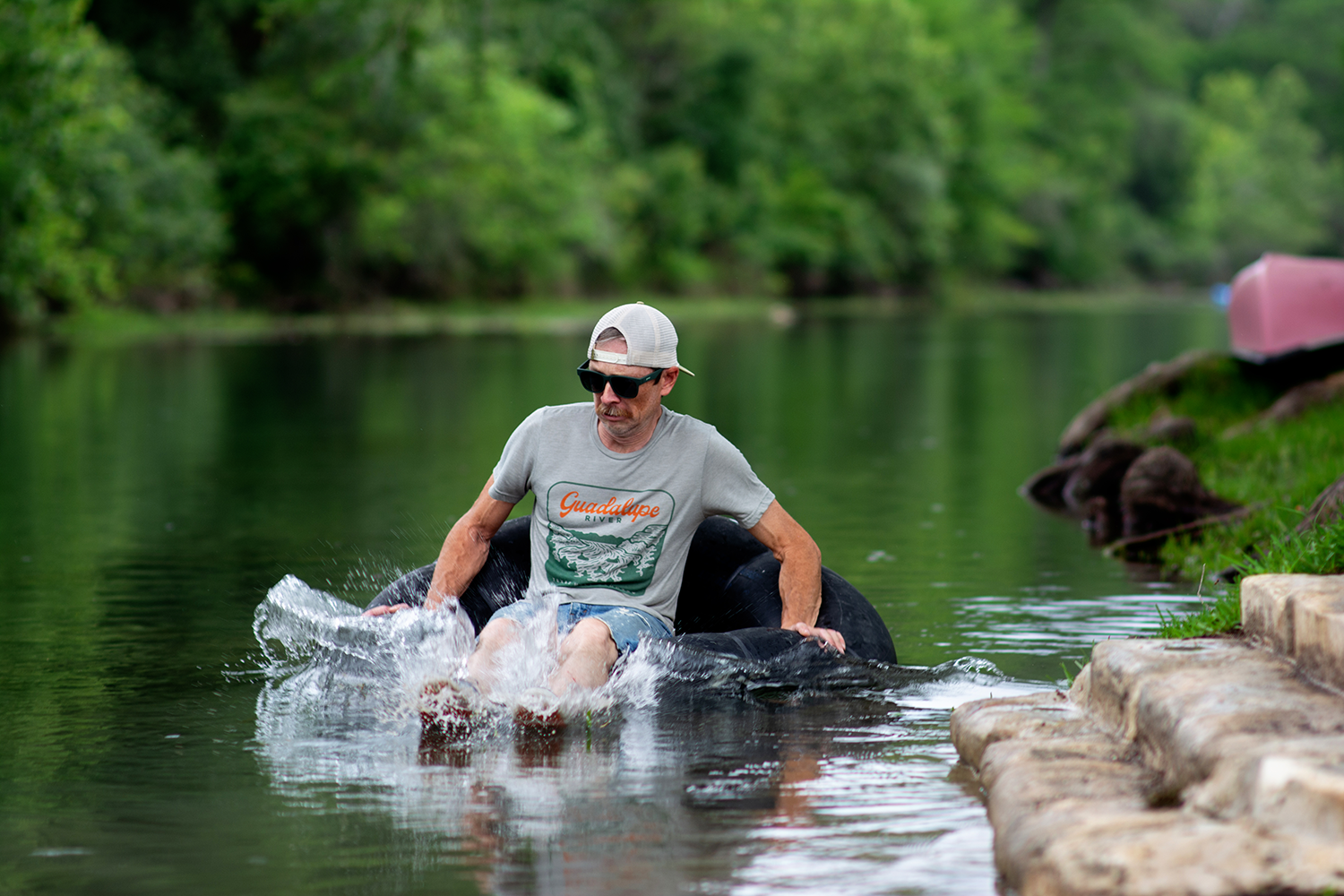
Floating the river is like a rite of passage for both Texans and the millions of visitors to the Lone Star State each year. It's a chance to disconnect from the hustle of life, lose yourself in the splashing current, and soak in the beautiful countryside.
There are no strangers on the river, only friends you haven't met yet. You'll see families floating together, groups of friends laughing and hollering, and solo adventurers working out the week's stress on the water. On the Guadalupe River, the most popular spot for river floating in Texas, the river lifestyle creates a community where people unite by their love of nature and need for adventure.
Texas rivers remind us that sometimes the most meaningful moments in life require nothing more than a bit of sunshine, some good company, and a whole lot of water.
Tips to Prepare for a Fun and Safe Float:
#1 Choose the Right River & Time of DaySome rivers have rapids, so it's important to research and choose a river that suits your abilities. Check the weather and water levels before going. Get started early so you can be off the river before the sun rages.
Great Texas Rivers for Floating:
-
Guadalupe River

- Comal River
- Frio River
- Brazos River
- San Marcos River
- Medina River
- Nueces River
- Sabinal River
- San Saba River
- Colorado River
- Trinity River
- Pedernales River
- Llano River
- Blanco River
- Pecos River
#2 Wear Appropriate Clothing
Wear lightweight, quick-drying clothes that you don't mind getting wet (and maybe even a little muddy). A swimsuit, water shoes or sandals, and a hat are recommended. Remember sunscreen and sunglasses to protect yourself from the rays. Life jackets are not required for any person floating the river, regardless of age, as long as they are not in a powered watercraft, such as a jet ski, boat, etc.
#3 Bring Necessary Equipment
A waterproof bag or container for your phone, keys, and other valuables is recommended. Bringing a small cooler bag with food and drinks is also a good idea. There is no glass, Styrofoam, or littering allowed on any Texas river, and nearly all rivers have a “can ban” requiring you to have a disposable water bottle or tumbler for drinks.
#4 Follow Safety Rules
Some rivers in Texas may have specific regulations regarding alcohol consumption. Make sure to review and follow all safety rules and regulations for the area you will visit (learn more here). Also, be aware of your surroundings and avoid dangerous areas like dams or low-head weirs where injuries often occur.
#5 Respect The Environment
Leave no trace of your float and pack out any trash or litter. Respect wildlife and do not disturb or harm any animals. As we say down here, "If You Float Gruene … Keep It Clean."
Floating the river should be a fun and relaxing activity. Enjoy the scenery, soak up the sun, and have a great time with friends and family.
Beware, Some Texas Rivers Have Rapids
Texas is not typically known for having extensive whitewater rapids, but a few rivers offer mild rapids and are popular among rafters and kayakers.
Rio Grande
The Rio Grande has some sections that offer Class II-III rapids, particularly in Big Bend National Park.
Devils River
The Devils River is known for its clear water and scenic beauty, and it has some Class II-III rapids in certain sections.
Guadalupe River
The Guadalupe River has some rapids in its upper sections, particularly around the Canyon Lake area. These rapids are generally Class I-II, although they can reach Class III during periods of high water.
Colorado River (West Texas)
The Colorado River in West Texas has some rapids in the Big Bend Ranch State Park, including Class II-III rapids in the Colorado Canyon section.
MOST IMPORTANTLY!
Practice responsible river etiquette and leave no trace of trash.

* Water levels and river conditions can vary greatly depending on the season and weather conditions. It's critical to check with local authorities or experienced outfitters before attempting any river activities and always wear appropriate safety gear and follow best practices for whitewater rafting or kayaking.






Share:
Get to Know a Few Inspirational Texas Businesswomen
How Did Floating The River Become A Beloved Texas Pastime?